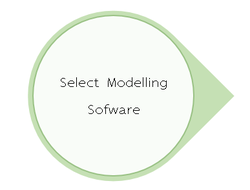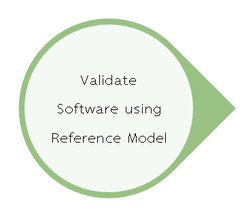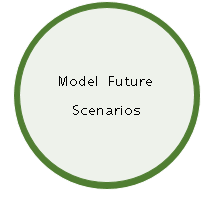This page provides an introduction to the project modelling methodology that consists of three key steps as shown in Figure 1 below. for more detail, click on the icon.

There are many energy modelling programs available in which this project could use to model future grid scenarios. A selection matrix was used in order to choose the most appropriate.
Following the selection process, EnergyPLAN was chosen to model the future grid scenario primarily because it was readily available, capable of modelling nation wide electricity grid systems and input and assess the influence of dynamic factors such as varying demand and weather. Click on the icon above for more detail on the modelling program selection process.

Following the decision to select the EnergyPLAN software and prior to modelling 2050 grid scenarios, it was important to take the software through a verification process. Verification improves confidence in the software and that the software is being used correctly.
To help verify the software, a model of the 2014 grid was set up, and the information generated from the simulations was compared with 2014 historical data to check there is a good match. Following verification, the project can then proceed to modelling 2050 scenarios. For more information on verification, click on the icon above.

EnergyPLAN was used to model a number of low carbon UK grid scenarios for 2050. It should be noted that only realistic maximum capacity for various low carbon electricity generators will be used as well as the modelling of established and proven technologies (refer to Scope?). The focus of the 2050 grid scenario models is to minimise the CO2 emissions associated with electricity generation. for more information on the 2050 UK grid scenario modelling, click on the icon above.



